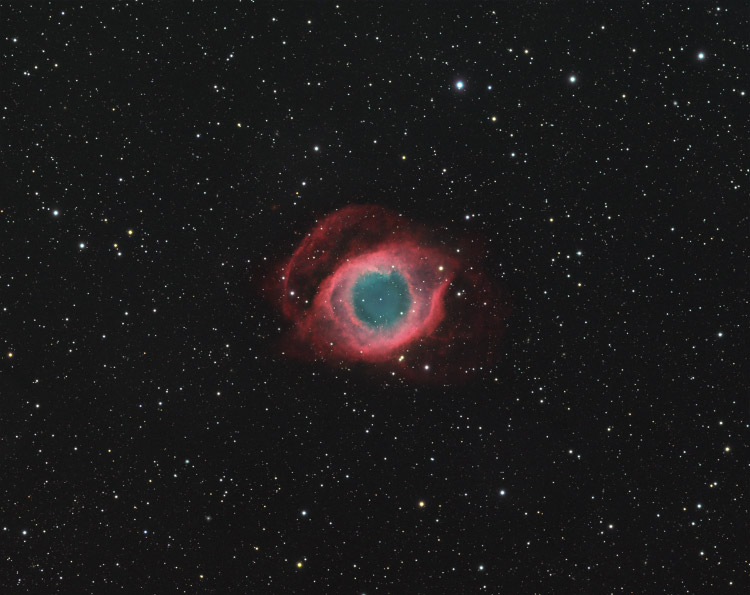
clic for 70% size 2020 x 1603 (550 kB)
About this Image |
|
|
The Helix Nebula is a vast glowing cloud of Hydrogen, Nitrogen, Oxygen, and other elements some 500 light years away
toward the constellation Aquarius and spans about 2.5 light-years.
The nebula is made up of gas ejected from a blueish dying star, which is located in the center of the nebula.
|
|
|
| Optics |
TEC-140 APO refractor with TEC flattener at f/7 |
| Mount | AP-400 GEM |
| Camera | SBIG STL-11000M at -25C, internal filter wheel |
| Filters | LRGB |
| Date | May 27-29, 2006. |
| Location | Hakos/Namibia |
| Sky Conditions | mag 6.5, high transparency, temperature 10 C, |
| Exposure |
Ha:L:R:G:B= 180:180:60:60:60 min (10 min sub-exposures for LRGB, 30 min subs for Ha) all 1x1. |
| Processing |
Image aquisition and calibration in Maxim DL 4.11; Photoshop: curves, color balance; |